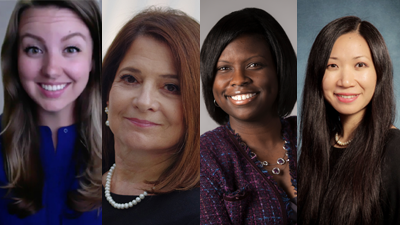Research in Progress: Learning through history and experience
August 18, 2020

By Taylor S. Voges, (doctoral student) University of Georgia; Shelley Spector, Museum of Public Relations; LaShonda L. Eaddy, Southern Methodist University; and Yan Jin, University of Georgia
The year 2020 will more than likely be known as the year of the Global Coronavirus (COVID-19) Pandemic—the year that many countries shut down their borders, restricted travel, and mandated that their citizens operate under quarantine. Soon after the outbreak, communications about this pandemic took center stage. Google provided a standing warning about COVID-19; organizations sent their stakeholders information about what they were doing about the pandemic; apps like Snapchat and Twitter pinned what they considered the most recent COVID-19 news.
Meanwhile, health organizations like the Centers for Disease Control and Prevention (CDC) and the World Health Organization (WHO) are attempting to both understand this novel virus and communicate their recommendations amidst the first true social media “infodemic.” Viruses, though, are not novel--nor are widespread viruses (e.g., 1918 flu, the polio outbreak, HIV/AIDS). But as it is currently known, pandemics present distinct challenges for crisis communication because their causes, spread, and treatments are typically unknown .
To provide insights leaning from both the past and present pandemic communication practices, our twofold project, funded by the Page Center, examines 20th and 21st Century public health crises that had profound effects on public life and business operations. Specifically, the interest is in the communication of the outbreaks: who interacted with the public and how they provided vital information to and interacted with their stakeholders.
Given the layered complexity of a pandemic, our multipart examination focuses on specific elements regarding the communication from government and health organizations. Those of interest include: public opinion; perceived ethicality of the communication; the impact of rumors and misinformation; the use of emotive language; any stereotypes and stigmas; and which organizations emerged as leaders in communicating about the virus over time.
Part one of our project includes analyses based on archival research examining the narratives surrounding past virus outbreaks. The lessons of past work help explain the story of the present. Part two focuses on gathering insights from experts working as communicators throughout the COVID-19 pandemic; using in-depth interviews to divulge insights and help bring to light the communication issues surrounding pandemics—especially those during the age of social media and digital technologies.
Our preliminary findings indicate that communication about the effect of these virus outbreaks is bound by cultural situations--such as with the 1918 flu outbreak and World War I. While there is the tendency to assume that situations (and thus the communication about those situations) happen in a vacuum, outside pressures influence what is able to be communicated. These influences have the potential to set the standards for future communication attempts.
Provided the complexity of pandemics, and the multitude of pandemics and viral outbreaks included in this project, we hope to use the combined power of these crises as a way to provide evidence-based recommendations for public health crisis communication instances—with the hopes of bettering crisis management practices and increasing the ethicality of the communication entirely.
This blog post is written for the following 2020-2021 Page Center funded project:
“Ethical and Effective Multi-Agency Public Crisis Communications: Lessons Learned from Recent U.S. History and through the Lens of Practitioners Who Fought in the Trench Warfare against the COVID-19 Pandemic." For more information, email Voges at taylor.voges@uga.edu, Spector at shelley@spectorpr.com, LaShonda L. Eaddy at leaddy@smu.edu or Yan Jin at yanjin@uga.edu.

